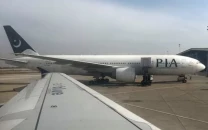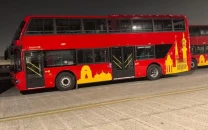State of children's rights getting worse
Children's Day turns into a rallying cry: young voices demand basic rights

On a day meant for joy, children traded festivities for protests as they fought for their fundamental rights. On the occasion of Universal Children's Day, future leaders from different school clubs in Benazirabad urged the district and provincial governments to invest funds and take extraordinary steps to protect the right to life, survival, health, and education in the province especially in tribal areas where schools and health facilities and services do not exist; thus, children become part of tribal gangs, which fuels the tribal warfare.
The Hari Welfare Association (HWA) organised a seminar to mark the day, where hundreds of children from different child rights clubs and schools gathered and raised their challenges through different forms of art; tableaus, speeches and paintings.
Children including Sakeena, Zahra, Yashfa, Amna Jabbar, Hamza, Fiza and Paras revealed alarming statistics on education and child welfare in the province. They shared that an estimated 100,000 children are directly and indirectly engaged in tribal conflicts.
Even people who are adults now, have spent all their childhood in tribal disputes without education.
They said these children in tribal districts especially in riverine areas have bleak futures. They only learn taking revenge and unlawful activities and to create the worst law and order situations in the region.
The innocent generation demanded the provincial government for more funds for building schools in rural areas, appointing of female teachers, initiate rigorous monitoring and take measures to restore peace in tribal districts. They also requested for children and women's immunisation scales to be spread to rural areas, and special services should be started to support malnourished children. They also urged the government to expand child protection mechanisms at the tehsil level to protect children's future.
President HWA Akram Ali Khaskheli said that according to a report, 6.4 million out-of-school children in Sindh, were deprived of their right to education due to poverty, lack of nearby schools, government disinterest, awareness, and corporal punishment. Despite an increase in the Sindh Education and Literacy Department's budget, the number of schools decreased.
The HWA noted a reduction in schools from 49,211 in 2006-07 to 42,383 in 2016-17, with a substantial decline in girls' schools.
The HWA estimated over 1.7 million bonded labourers in Sindh, including over 700,000 children.



















COMMENTS
Comments are moderated and generally will be posted if they are on-topic and not abusive.
For more information, please see our Comments FAQ